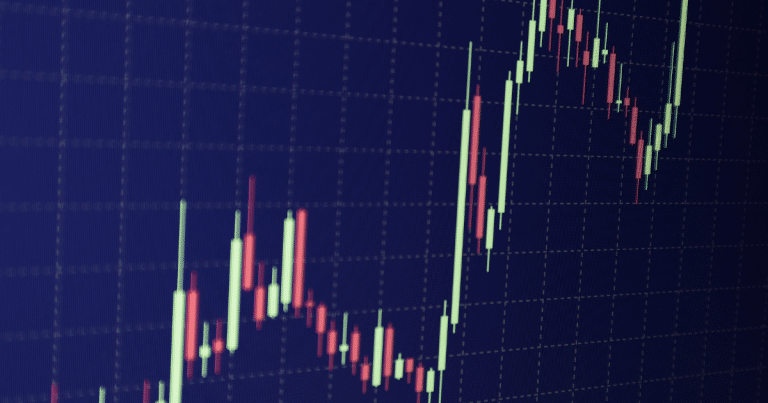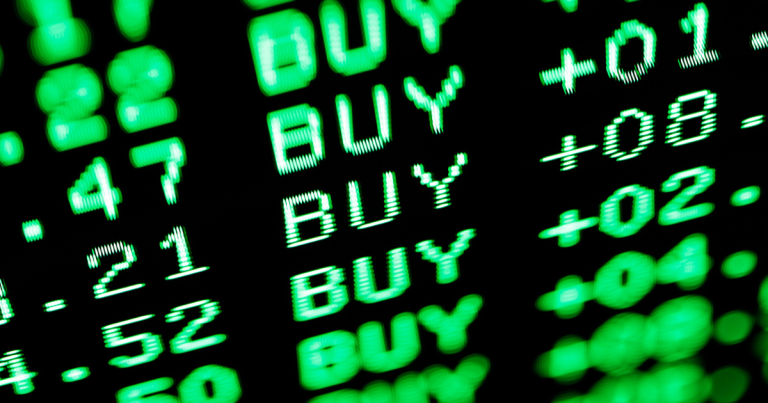
Getting the Hang of Exponential Moving Average (EMA)
What’s an EMA Anyway?
An exponential moving average (EMA) is a type of weighted moving average (WMA) that gives more importance to the latest price data. This makes the EMA quicker to react to price changes compared to other moving averages. Traders often use the EMA to spot market trends and potential buy or sell signals.
| Why EMA Rocks |
|---|
| Focuses on recent prices |
| Quick to react to price changes |
| Helps spot trends |
EMA vs. SMA: What’s the Difference?
Both the simple moving average (SMA) and the exponential moving average (EMA) are tools in technical analysis, but they aren’t the same beast.
The SMA takes the average of a set range of prices by adding them up and dividing by the number of periods. It treats all price points equally.
The EMA, on the other hand, uses a fancier formula that gives more weight to the latest prices. This makes the EMA more sensitive to recent price movements, offering more timely signals for traders (Investopedia).
| Feature | EMA | SMA |
|---|---|---|
| Weighting | More weight to recent prices | Equal weight to all prices |
| Reactivity | More responsive to price changes | Less responsive |
| Calculation | More complex | Simpler |
If you want to dive deeper into the differences and uses of these averages, check out our detailed comparison on simple moving average vs exponential moving average.
The EMA’s knack for giving more timely signals is why many traders favor it over the SMA. Its responsiveness makes it a key tool in various trading strategies, like the exponential moving average crossover strategy.
For more on different types of moving averages and how to use them, take a look at our guide on moving average types.
Calculating Exponential Moving Average
So, you want to get the hang of the Exponential Moving Average (EMA)? Perfect! This tool is a game-changer for traders looking to sharpen their strategies. Let’s break it down without the fluff.
The EMA Formula
First things first, the EMA isn’t just some fancy math trick. It’s a way to give more importance to recent prices, making it more responsive to market changes than the Simple Moving Average (SMA). Here’s the magic formula:
EMA = Price today × k + EMA yesterday × ( 1 – k )Where:
- ( k ) is the smoothing factor, calculated as ( \frac{2}{n+1} )
- ( n ) is the number of periods
For example, if you’re looking at a 20-day EMA, the smoothing factor ( k ) would be:
k = 2 20+1 = 0.0952So, 9.52% of the weight goes to today’s price.
Why Weighting Matters
The secret sauce of the EMA is in its weighting. The more recent the price, the more weight it gets. This makes shorter-period EMAs super sensitive to price changes—great for short-term trading.
| Number of Periods | Multiplier (Weight) |
|---|---|
| 10-day EMA | 0.1818 (18.18%) |
| 20-day EMA | 0.0952 (9.52%) |
Notice how a 10-day EMA gives 18.18% weight to the latest price, while a 20-day EMA gives just 9.52%. This means the 10-day EMA reacts faster to price changes than the 20-day EMA (Investopedia).
The EMA needs one more observation than the SMA, and the smoothing multiplier usually follows ( \frac{2}{n + 1} ) (Investopedia). For traders, this quick reaction to price changes makes the EMA a go-to for spotting trends.
Want more tips? Check out our pages on moving average trading strategies, simple moving average vs exponential moving average, and weighted moving average.
By nailing the EMA formula and understanding its weighting, you’ll be better equipped to use this tool in your trading strategies. Happy trading!
Practical Application of EMA
Short-term vs Long-term EMAs
In trading, Exponential Moving Averages (EMAs) are like your trusty sidekicks, each with their own superpowers depending on the time frame. Short-term and long-term EMAs each bring their own flavor to the table.
Short-term EMAs, like the 12-day and 26-day, are the go-to for traders looking to catch quick price moves. These shorter time frames let the EMA react faster to recent price changes, making them perfect for spotting immediate trading opportunities. Think of them as your early warning system. For example, the 12- and 26-day EMAs are often used to create indicators like the moving average convergence divergence (MACD) and the percentage price oscillator (PPO) (Investopedia).
| EMA Period | Type | Typical Use |
|---|---|---|
| 12-day | Short-term | Quick price movements |
| 26-day | Short-term | Quick price movements |
| 50-day | Long-term | Trend identification |
| 200-day | Long-term | Trend identification |
On the flip side, long-term EMAs, such as the 50-day and 200-day, are the favorites for traders with a longer game plan. These EMAs give a broader view of the market trend and help filter out the noise of short-term price swings. Traders lean on these longer EMAs to confirm the overall market direction and make more informed decisions. You can calculate averages using our calculator.
EMA Crossover Signals
EMA crossover signals are like the secret handshake of the trading world. They help traders spot potential changes in market trends. A crossover happens when a shorter-term EMA crosses above or below a longer-term EMA, signaling a shift in momentum and potential buy or sell opportunities.
Golden Cross: This is the golden ticket when a short-term EMA, like the 50-day, crosses above a long-term EMA, such as the 200-day. It’s a bullish signal, hinting that the market might be gearing up for an upward trend (Investopedia).
Death Cross: This is the grim reaper of signals. It occurs when a short-term EMA crosses below a long-term EMA. It’s a bearish signal, suggesting the market might be heading south (Investopedia).
| Crossover Type | Short-term EMA | Long-term EMA | Signal Type |
|---|---|---|---|
| Golden Cross | 50-day | 200-day | Bullish |
| Death Cross | 50-day | 200-day | Bearish |
Traders often use these crossover signals as part of their trading strategies to make timely entry and exit decisions. The EMA’s quick response to price changes makes it a valuable tool for confirming market trends and boosting the consistency of trading decisions.
For more on how to use these strategies effectively, check out our article on the exponential moving average crossover strategy. Also, understanding the different moving average types and their uses can sharpen your trading approach.
Why You Should Use EMA
Getting the hang of exponential moving averages (EMA) can really up your trading game. The EMA is like your trusty sidekick, quick to react to price changes and solid at confirming market trends.
Quick to React
One of the best things about the EMA is how fast it reacts to price changes. Unlike the simple moving average (SMA), the EMA gives more weight to recent prices. This means it’s quicker on the draw when the market shifts (Investopedia).
Here’s the math behind it:
Multiplier = 2 number of observations+1This formula makes the EMA super sensitive to new data, which is great for traders who need to move fast, like those trading within the day. Check out this table to see how the EMA stacks up against the SMA over 10 days:
| Day | Closing Price | EMA (10-day) | SMA (10-day) |
|---|---|---|---|
| 1 | $50 | $50 | $50 |
| 2 | $52 | $50.36 | $51 |
| 3 | $51 | $50.57 | $51 |
| 4 | $53 | $51.14 | $51.5 |
| 5 | $54 | $51.95 | $52 |
| 6 | $55 | $52.97 | $52.5 |
| 7 | $56 | $54.17 | $53 |
| 8 | $55 | $54.69 | $53.5 |
| 9 | $53 | $54.12 | $53 |
| 10 | $52 | $53.41 | $52.5 |
See how the EMA is quicker to catch on to price changes? That’s what makes it a go-to for traders who need to stay on their toes.
Spotting Trends
Another big win for the EMA is how it helps confirm market trends. When the market’s on the move, the EMA can show you the way. If the EMA is going up, the market’s likely in an uptrend. If it’s going down, you’re looking at a downtrend (Investopedia).
Traders often pair the EMA with other indicators to get a clearer picture. A popular move is the EMA crossover, where a short-term EMA crosses above or below a long-term EMA. This can signal when to buy or sell (Investopedia).
Take the 12- and 26-day EMAs, for example. They’re used to create the Moving Average Convergence Divergence (MACD), which helps spot trend reversals (Investopedia). For more on this, check out our article on the exponential moving average crossover strategy.
Using the EMA to confirm trends helps you make smarter trades and avoid false signals. It’s especially handy in trending markets where catching the trend early is key.
By getting to know the EMA, you can use it to boost your trading strategies and get more consistent results. For more on moving averages, check out our articles on moving average types and simple moving average vs exponential moving average.
EMA in Trading Strategies
Exponential Moving Averages (EMAs) are a game-changer for crafting effective trading strategies. Whether you’re a lone wolf or like to mix and match with other indicators, EMAs can seriously up your trading game. Let’s break down two key uses: Moving Average Ribbons and spotting Buy and Sell Signals.
Moving Average Ribbons
Moving Average Ribbons are like a cheat sheet for market trends. By plotting multiple moving averages on a price chart, they give you a clear picture of what’s happening. Traders use these ribbons to spot turning points, trend continuations, overbought or oversold conditions, and areas of support and resistance. They also help measure how strong a price trend is (Investopedia).
A typical Moving Average Ribbon includes EMAs of different periods, like 5, 10, 20, 50, 100, and 200 days. Watching how these EMAs line up and spread out can give you a heads-up on market trends and possible reversals.
| EMA Period | What It Shows |
|---|---|
| 5-Day EMA | Short-term trend |
| 10-Day EMA | Short-term trend |
| 20-Day EMA | Intermediate trend |
| 50-Day EMA | Intermediate trend |
| 100-Day EMA | Long-term trend |
| 200-Day EMA | Long-term trend |
When these EMAs are all moving together in parallel, it means the trend is strong. But if they start to bunch up or cross each other, it could mean a trend reversal or a consolidation phase is coming. Want more on picking the right time frame? Check out our article on time frame selection.
Identifying Buy and Sell Signals
EMAs are gold for generating buy and sell signals, which are crucial for making smart trading moves. One popular method is the exponential moving average crossover strategy. This involves looking at where short-term and long-term EMAs cross each other.
| Signal Type | What It Means |
|---|---|
| Buy Signal | Short-term EMA crosses above long-term EMA |
| Sell Signal | Short-term EMA crosses below long-term EMA |
When a short-term EMA (like the 20-day) crosses above a long-term EMA (like the 50-day), it sends a buy signal, hinting at an upward trend. On the flip side, when a short-term EMA crosses below a long-term EMA, it sends a sell signal, suggesting a downward trend.
To make these signals even more reliable, traders often pair EMA signals with other indicators like the Moving Average Convergence Divergence (MACD) or the Volume Weighted Average Price (VWAP).
By getting the hang of these EMA strategies, you can sharpen your market analysis and make better trading decisions. For more on different types of moving averages, check out our article on moving average types.








I’m still a little confused about the whole EMA thing, but this post is a good starting point for me to learn more. Thanks for sharing this! 😊
This EMA formula looks a bit complicated but Im sure I can figure it out with some practice Thanks for sharing this valuable info
So, the EMA gives more weight to recent data, right? That makes sense. I’m still trying to figure out how to apply it in real trading, but this is a good starting point. Thanks!
Good explanation, but honestly, I’m not sure I’m convinced about the advantages of EMA over SMA. Maybe I need to do more research. 🤔
this is a great explainer on emas! i’ve been trying to wrap my head around them for a while now, and this really helped. thanks for breaking it down in a way that even a newbie like me can understand.